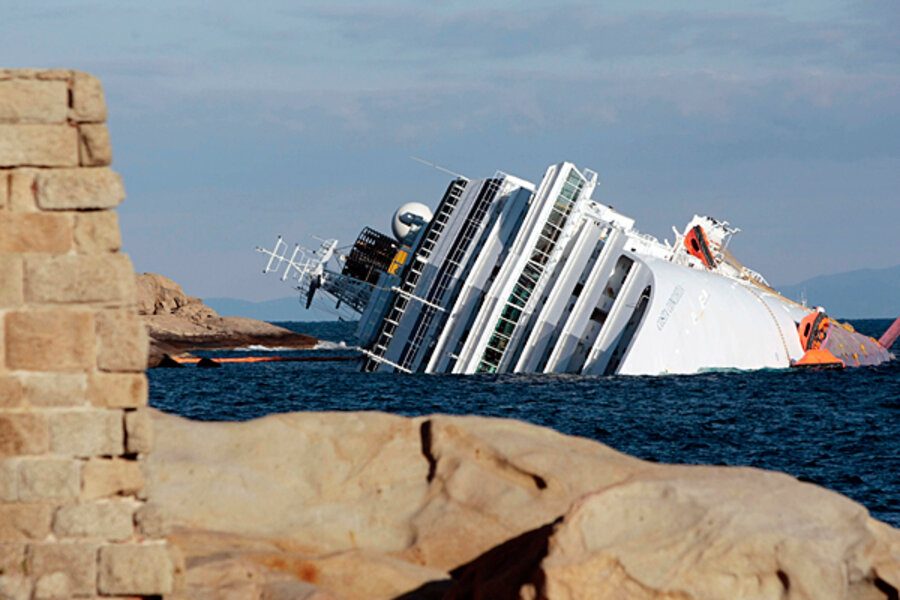Video by a German passenger records crew members reassuring passengers in the dark corridors not to panic. Later. it is alleged the captain authorized the communication: “Due to an electrical fault which is currently under control, we are currently in a blackout,” the voice from the speaker says. "Our technicians are working to resolve the situation and we will inform you of developments as they occur.” Passengers were later seen hanging around corridors, some holding life jackets and looking unaware of what action to take.
The boat hit the rock at about 9:40 p.m., well before this announcement. The captain did not alert port authorities about the crash until 10:42 p.m. by several accounts. The port controller called the ship’s commander four times for information and the captain replied it was an electrical problem. During this time the captain tried to “turn” the boat, the action of which caused the water to flood the ripped hull compartments. The ship finally tilted on its side near a rocky shelf where it now rests.
Only at 10:50 p.m. did Schettino finally give the order to evacuate. A crew member told journalists that had the hour of delay been used to lower the life boats on both sides of the ship, all passengers would have arrived on land “without getting their feet wet.” Investigation continues as to whether there was an electrical fault.







